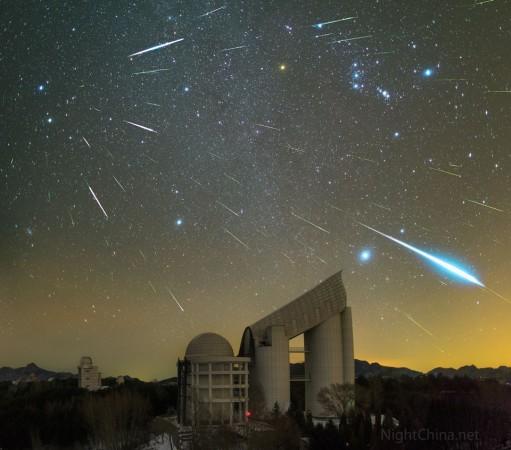
It may soon be possible to order a custom meteor shower for special occasions. If things go according to plan, arcs of blue, green, and orange could light up the sky wherever needed, any place on Earth, emulating actual shooting stars.
The "meteor shower" will come courtesy falling metallic pebbles released from a satellite about 355 km above the Earth, reported BuzzFeed News.
The company behind the idea, called Astro Live Experiences (ALE) and founded by University of Tokyo astronomer Lena Okajima, will circle the globe and deliver 15-20 "seeds" that will light up the night sky for a few seconds over any city of choice.
"We want to provide meteor showers on demand," said Josh Rodenbaugh, a member of ALE's satellite operations team. Customers could be anyone who can afford this spectacle, including cities, companies, or even amusement parks, said the report.
This idea was conceived as a way to light up the opening ceremony of the 2020 Tokyo Olympics, but now has bloomed into a private enterprise and the company plans to provide this service to anyone willing to pay for it.
However, satellite experts are questioning the logic and safety of a project like this, noted the report.
Dropping metallic objects with the intent for them to burn up in the upper atmosphere could be dangerous for satellites in that orbit. Also, the issue of space junk is real. If small pellets are left behind in orbit without burning up as intended, they could only add to the already-crowded upper atmosphere, noted the report.
"I salute them for cleverness and for their technical expertise, but from an orbital debris standpoint, it's not a great idea," University of Michigan astronomer Patrick Seitzer told BuzzFeed News. "I'm concerned space will be getting crowded in low-earth orbit in the next 10 years."
However, the report clarified that the fake meteors will operate at an altitude of around 37 miles above Earth, which is too low for low-Earth-orbit satellites and too high for experimental balloons.
ALE will launch two microsatellites by the end of this year, noted the report. They will weigh about 150 pounds each, carrying 300-400 meteor pellets. They will each have enough fuel to stay in orbit for about 27 months, after which they will fall back into the atmosphere, burning up on reentry.

















